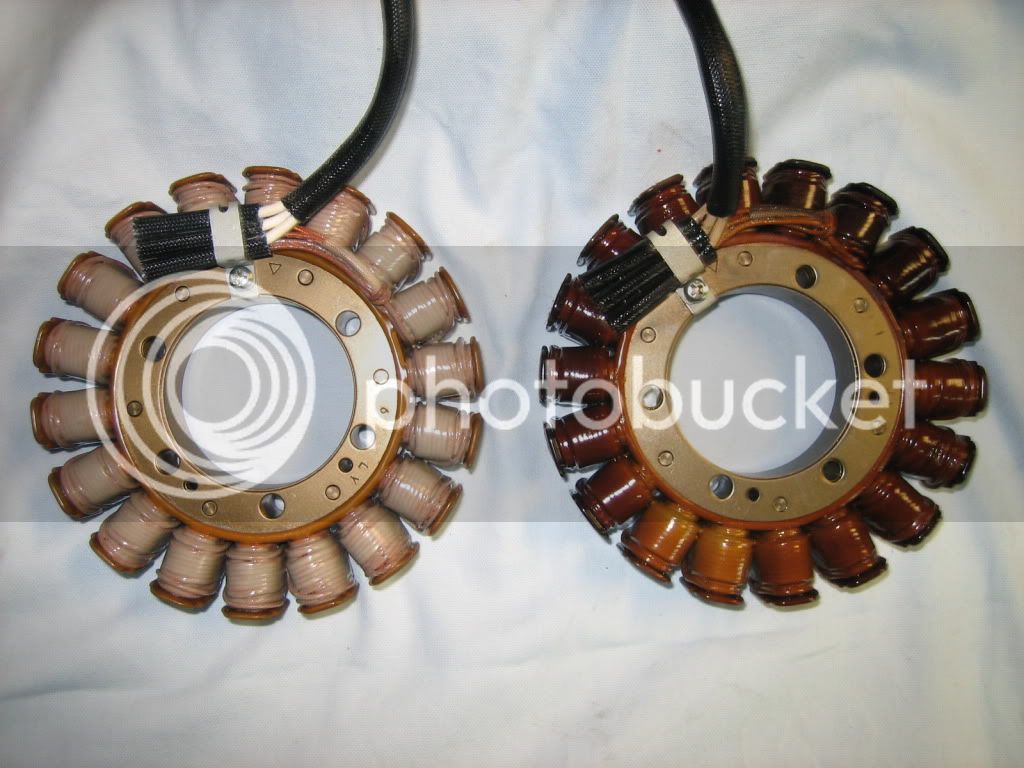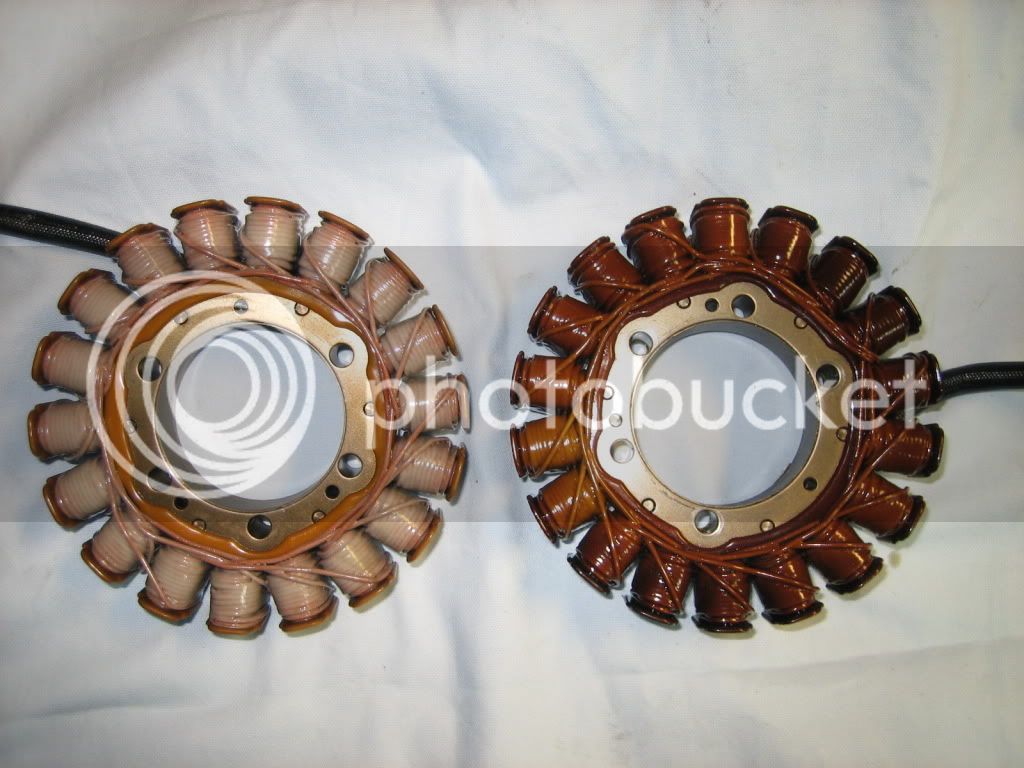Update -
Well, I got it put back together today -
Started her up ......
And dead on stable voltages. It was most certainly the stator.
So - to those of you with 'dancing' voltage read outs - you might want to really watch it - and make sure your towing service is up to date.
Good job Hal! Now, the next step, to rewind the old stator?
Ya know, it would be kinda fun to play with an old stator - but it went back to MammyYammy.
Don, don't you have a "dancing Nancy" stator? And there's also Silent - Ray, what's your's like?
My dancing Nancy is only doing a 2 step, not a complete waltzing Matilda. :lol:
When cold, at idle, normal house load, I see 14.1, 14.2, 13.9, about a .3 .4 max VDC swing. I attribute that to noise.
When hot, the voltage actually stabilizes a bit, I see maybe a .1 sometime .2 swing.
Additionally, when loaded, the circuit appears more stable. Turn on the Solteks and she's rock solid.
For now, I'm just going to keep on running what I have.. :yahoo:















